
A genetic study identifies migraine causes and potential treatment targets.
Queensland University of Technology (QUT) genetic researchers discovered blood proteins that induce migraines and have a connection to Alzheimer’s disease, which might be prevented by repurposing existing treatments
A migraine is a kind of headache that causes intense throbbing or pulsating pain, typically on one side of the brain. It’s commonly accompanied by nausea, vomiting, and extreme light and sound sensitivity. Migraine episodes may last anywhere from hours to days, and the pain can be severe enough to prevent you from going about your regular routine.
The disease is commonly passed down through families and may affect people of all ages. Females are more likely to be diagnosed with migraine than males. A variety of factors can trigger a migraine, including but not limited to stress, anxiety, and loud noises. Currently, there is no cure for migraines however recent research from the Queensland University of Technology (QUT) shows promise.
A new study from QUT researchers identifies migraine causes and promising therapeutic targets. Professor Dale Nyholt and his Ph.D. candidate Hamzeh Tanha from the QUT Centre for Genomics and Personalised Health reported their findings from the genetic study in Nature Communications.
Professor Nyholt said the study identified causal genetic links between migraine risk and altered levels of five blood proteins:
- Lower levels of FARS2, GSTA4, and CHIC2 proteins are linked to inflammation and migraine.
- Higher levels of DKK1 and PDGFB proteins inhibit Wnt signaling pathways and have links to brain calcification disorders.
- The risk-increasing effect of DKK1 provides a potential mechanistic link between the previously reported associations between migraine, Alzheimer’s disease (AD), and cerebral amyloid angiopathy (CAA).
According to Professor Nyholt, migraine sufferers exhibited greater levels of DKK1 and PDGFB and lower levels of FARS2, GSTA4, and CHIC2, which elevated their risk of migraine.
He stated that higher levels of DKK1 and PDGFB blood proteins inhibited Wnt signaling pathways, which pass biological signals into cells and could lead to brain calcification as well as pain-causing inflammation, whereas lower levels of antioxidant blood proteins FARS2, GSTA4, and CHIC2 also caused migraine-related inflammation.

QUT genetic researchers Professor Dale Nyholt and Hamzeh Tanha. Credit: Queensland University of Technology
“Notably, our finding of a strong causal effect of higher levels of DKK1 on migraine risk might be linked to a reduction in Wnt signaling as observed in Alzheimer’s disease and cerebral amyloid angiopathy,” Professor Nyholt said. “Cerebral amyloid angiopathy is a build-up of proteins in brain arteries known to cause Alzheimer’s disease and reduced Wnt signaling has also been shown to increase neuropathic pain in a rat model.”
Professor Nyholt said migraine was one of the most common neurological diseases in the world and was under-researched considering its significant public health burden. In Australia alone, he said the estimated cost to the Australian economy was about $35.7 billion each year, and current treatments failed up to 50 percent of migraine patients.
Professor Nyholt said therapies proposed for Alzheimer’s disease called Wnt activators that restored Wnt/beta-catenin signaling in the brain could represent novel therapeutic tools for migraine treatment.
“The good news is that there is already some development of therapy targeting increased DKK1 for Alzheimer’s treatment and potential to repurpose that therapy for migraine,” Professor Nyholt said.
Professor Nyholt said while repurposing existing therapies also had the potential to prevent Alzheimer’s in some migraine patients, the solution was not that simple.
“There is no genetic link between migraine and Alzheimer’s disease but, in theory, controlling DKK1 levels could potentially prevent people with migraine from developing Alzheimer’s disease.
“However, although a subset of individuals who have Alzheimer’s may also have a history of migraine, not all migraine patients will have this link – not all people with migraine will get Alzheimer’s disease.
“There is typically no single cause for these complex conditions leading to diagnosis. There are lots of different mechanistic pathways that can go wrong and lead to disease.
“Our findings suggest that an increased production of DKK1 protein may be just one such biological mechanism underlying the reported increased risk of Alzheimer’s disease in migraine patients.”
Professor Nyholt said most genes contained information used to produce proteins, critical molecules required for the structure, function, and regulation of the body’s tissues and organs.
He said alterations in blood proteins were promising diagnostic biomarkers and therapeutic targets because those secreted from multiple tissues and cell types may be associated with disease via shared biological processes.
Professor Nyholt said future clinical studies should examine whether altering blood levels of the implicated proteins, such as using DKK1 inhibitors currently available or under study, reduces migraine occurrence in migraine patients.
Reference: “Genetic analyses identify pleiotropy and causality for blood proteins and highlight Wnt/ß-catenin signalling in migraine” by Hamzeh M. Tanha, The International Headache Genetics Consortium, and Dale R. Nyholt, 11 May 2022, Nature Communications.
DOI: 10.1038/s41467-022-30184-z

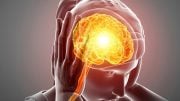
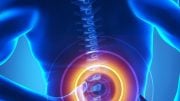

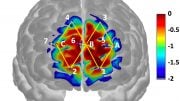
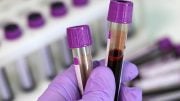
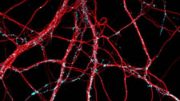

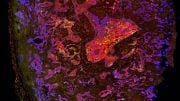
Be the first to comment on "Migraine Causes and New Potential Treatment Options Identified"